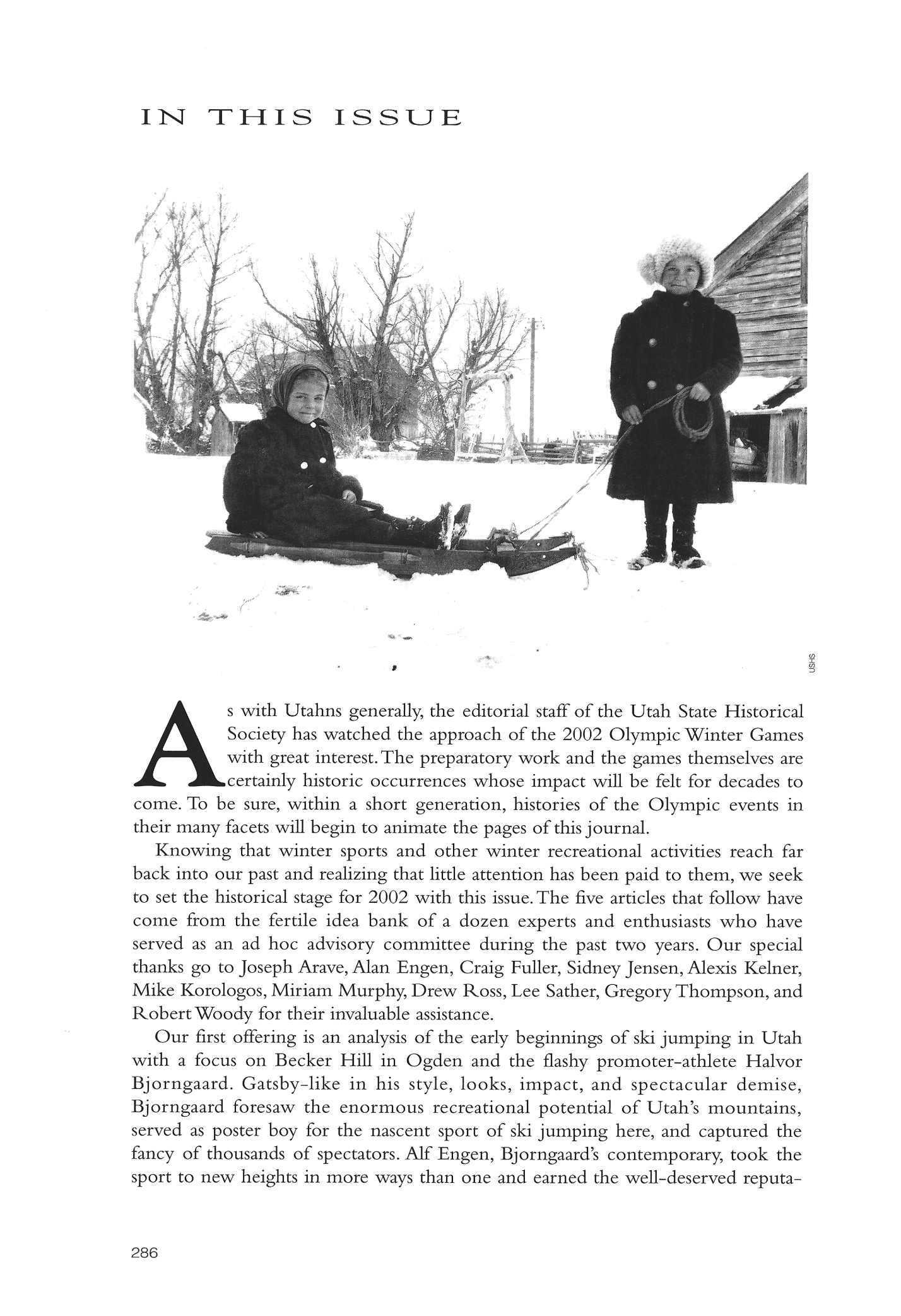
3 minute read
In This Issue
As with Utahns generally, the editorial staff of the Utah State Historical Society has watched the approach of the 2002 Olympic Winter Games with great interest The preparatory work and the games themselves are certainly historic occurrences whose impact will be felt for decades to come To be sure, within a short generation, histories of the Olympic events in their many facets will begin to animate the pages of this journal.
Knowing that "winter sports and other "winter recreational activities reach far back into our past and realizing that little attention has been paid to them, we seek to set the historical stage for 2002 with this issue The five articles that follow have come from the fertile idea bank of a dozen experts and enthusiasts who have served as an ad hoc advisory committee during the past two years Our special thanks go to Joseph Arave, Alan Engen, Craig Fuller, Sidney Jensen, Alexis Kelner, Mike Korologos, Miriam Murphy, Drew Ross, Lee Sather, Gregory Thompson, and Robert Woody for their invaluable assistance.
Our first offering is an analysis of the early beginnings of ski jumping in Utah with afocus on Becker Hill in Ogden and the flashy promoter-athlete Halvor Bjorngaard Gatsby-like in his style, looks, impact, and spectacular demise, Bjorngaard foresaw the enormous recreational potential of Utah's mountains, served as poster boy for the nascent sport of ski jumping here, and captured the fancy of thousands of spectators. Alf Engen, Bjorngaard's contemporary, took the sport to new heights in more ways than one and earned the well-deserved reputation as Utah's premier ski jumper No treatment of Utah "winter sports would be complete without a close look at him Many of Engen's achievements are mentioned in the first article, but it is only fitting that the second one be dedicated entirely to him.
A look at the early development of skiing in the old mining town of Park City follows. Focusing on town dynamics, this analysis highlights the debates, worries, environmental and social concerns, and economic impact of the coming ski industry in that unique community In contrast, the fourth article details a simpler form of winter activity—fun on sleds and skates in Utah Valley during an earlier time. Nostalgic and charming, it provides images and color that will touch readers of all ages and backgrounds
The final selection, written by the foremost authority on Utah winter sports, addresses the little-known story of ski huts along cross-country routes. It details their conception, construction, locations, and composite history Some of them now gone, others deteriorating under the weight of time and the elements, these cabins probably signify the end of an era. They certainly stand in marked contrast to the spectacular staging of the Olympic Winter Games. Whether these new, largescale approaches work for the better or worse, we happily leave to the next generation of historians to decide









